Deburring Equipment
Deburring equipment refers to a variety of devices, materials, and assemblies designed to remove burrs from materials and finished products. A burr is any unwanted raised point or fragment of material attached to a piece after a modification. Burrs commonly result from machining processes such as grinding, drilling, or engraving.
The methods and technologies used in deburring equipment can vary greatly in terms of action, suitable materials, scale, automation, and other factors, but they all serve the same essential function: removing rough edges, pultrusion, chips, shavings, and splinters from materials such as metal, wood, plastic, and more. Deburring processes often overlap with other operations like finishing, polishing, surface finishing, and descaling.
Frequently Asked Questions About Deburring Equipment
What is deburring equipment used for?
Deburring equipment is used to remove burrs, rough edges, and surface imperfections from materials such as metal, wood, or plastic after machining. This improves product safety, appearance, and performance in industries like automotive, aerospace, and electronics.
How does vibratory deburring work?
Vibratory deburring uses a bowl or tub filled with abrasive media and parts that are vibrated together. The mechanical motion smooths sharp edges and surfaces evenly, making it ideal for complex shapes or hollow parts found in Midwest manufacturing operations.
What are the advantages of electrochemical deburring?
Electrochemical deburring removes burrs precisely without mechanical wear, using electrolytic action on conductive materials. It’s ideal for intricate parts that require tight tolerances but is limited to metals that can resist corrosion from electrolytes.
When is manual deburring preferred over automated systems?
Manual deburring is preferred for low-volume production or custom parts that require precision and immediate inspection. Skilled operators can adjust techniques in real time, making it practical for smaller Midwest or local machine shops handling diverse workpieces.
What factors should be considered when selecting deburring equipment?
Key factors include material type, product standards, available floor space, manpower, automation level, and budget. The right equipment balances cost, precision, and throughput while allowing flexibility for future production changes or expansion.
What industries rely most on deburring equipment?
Deburring equipment is vital in automotive, aerospace, electronics, construction, and medical manufacturing. It ensures smooth edges and reliable finishes, preventing friction-related wear and improving component safety and appearance.
How does thermal deburring differ from other methods?
Thermal deburring uses controlled explosions in a sealed chamber to burn away burrs from metal parts. It’s ideal for heat-resistant materials like stainless steel but unsuitable for components sensitive to high temperatures or variable tolerances.
The History of Deburring
Deburring, by its nature, doesn't have a clear origin or a single inventor. The concept of deburring likely dates back to the creation of early metal weapons, parts, and jewelry, evolving significantly over time. Historical evidence suggests that ancient civilizations, like the Egyptians, had grinding wheels as early as 2000 BC.
Early deburring methods were probably based on simple tools like hand files, brushes, grindstones, and other manual equipment used to achieve a finished surface. There is evidence that blacksmiths during the medieval period utilized tumbling methods for items like metal chain mail. This process involved adding components to casks filled with small jagged stones and then rolling the casks to smooth the metal. Other key developments in the evolution of deburring include the Chinese invention of abrasive paper in 1225 and its first recorded use in France in 1769.
The modern history of deburring began around the same time as the application of abrasive materials. Throughout the 1700s and 1800s, deburring became more significant with the rise of industrialization and the development of machining tools. By the late 1800s, early forms of automated deburring and modern manual deburring equipment started to emerge. However, it wasn't until the 1900s and beyond that many of today's deburring and finishing methods, including sandblasting in 1935 and advanced cryogenic deburring techniques, were truly developed and refined.
Advantages of Basic Deburring Systems
Vibratory tumblers provide consistent treatment for workpieces, including difficult-to-reach areas like hollow spaces, interior surfaces, or edges, such as those found inside pipes or rings. Vibratory finishing offers greater flexibility for adjusting intensity compared to other tumblers, giving you better control over the metal finish. However, the main challenges with vibratory bowl deburring systems are the high cost, noise, and energy consumption.
Rotational tumblers, or rotary tumblers, are a more cost-effective option compared to vibratory tumblers, with the price advantage increasing as the size and weight of your workpieces and abrasive media rise, especially when using heavier materials like stainless steel. Rotary tumblers also operate much more quietly, while still delivering satisfactory results in many applications. However, they may struggle with achieving uniform results on the surface due to the unidirectional force, which can lead to uneven finishes on uniquely shaped parts.
Electrochemical deburring systems provide several benefits when applicable, such as reducing mechanical and thermal wear on machinery, offering high precision, and minimizing the risk of secondary burr production. The main limitation of electrochemical deburring is its restriction to electrically conductive materials and the risk of corrosion in the machine and parts due to exposure to electrolytes, unless proper maintenance is ensured.
Manual deburring systems provide a high level of control and accuracy, especially in skilled hands, and allow for immediate inspection and adjustments during the process. The advantages of manual deburring depend on the tools available and the expertise of the workforce, though the key limitations include difficulty managing large volumes of workpieces and achieving consistent results across the entire batch.
Thermal deburring offers benefits similar to electrochemical deburring, but with different limitations. It is effective only for parts that can withstand the high temperatures required to burn off burrs and flash. Thermal deburring requires careful inspection of each part to determine suitability, making it less ideal for systems that process a wide variety of components. However, it works particularly well for sheet metal and products made from stainless steel sheet metal.
Deburring Design
The effective use of deburring machines starts with a clear understanding of the deburring process, your goals, and the available options. While optimizing the use of a specific piece of deburring equipment can improve efficiency, the most significant gains will come from selecting the right deburring approach from the outset.
Several factors will influence the best approach for your deburring needs, including the material and product you're working with, available manpower, product standards, system installation costs, floor space, and existing automation in your workspace.
You’ll also need to assess how much flexibility your system requires. If you regularly work with different materials, tolerances, or components of varying sizes, your needs will differ greatly from a company that handles the same components consistently.
Additionally, it’s important to consider logistics for components or consumables used in the deburring process. Whether you're using chemicals, abrasives, or grindstones, these materials will be consumed regularly, so setting up a reliable supply chain is essential.
Manual and Automated Deburring
Deburring equipment can generally be categorized into two types based on their operation: manual and automated.
Manual Deburring Equipment
This category ranges from simple, low-tech methods, such as workers using abrasive brushes to remove small burrs, to advanced machinery designed for precise grinding down to millimeter accuracy. Manual deburring equipment can only process one workpiece at a time, which makes it impractical for high-volume applications.
Automated Deburring Equipment
In contrast, automated deburring equipment involves systems that perform deburring tasks with minimal human intervention. These machines are typically designed for high-volume use, where multiple components are deburred simultaneously through processes like tumbling or vibration. Achieving precision in automated high-volume deburring often requires sophisticated, expensive equipment. The cost of such systems tends to decrease depending on the specific requirements and tolerances of the components.
This distinction helps explain the significant costs associated with deburring in various manufacturing processes. Projects that cannot be automated for deburring require much more labor, even when using top-quality manual deburring tools.
Deburring Equipment Images, Diagrams and Visual Concepts
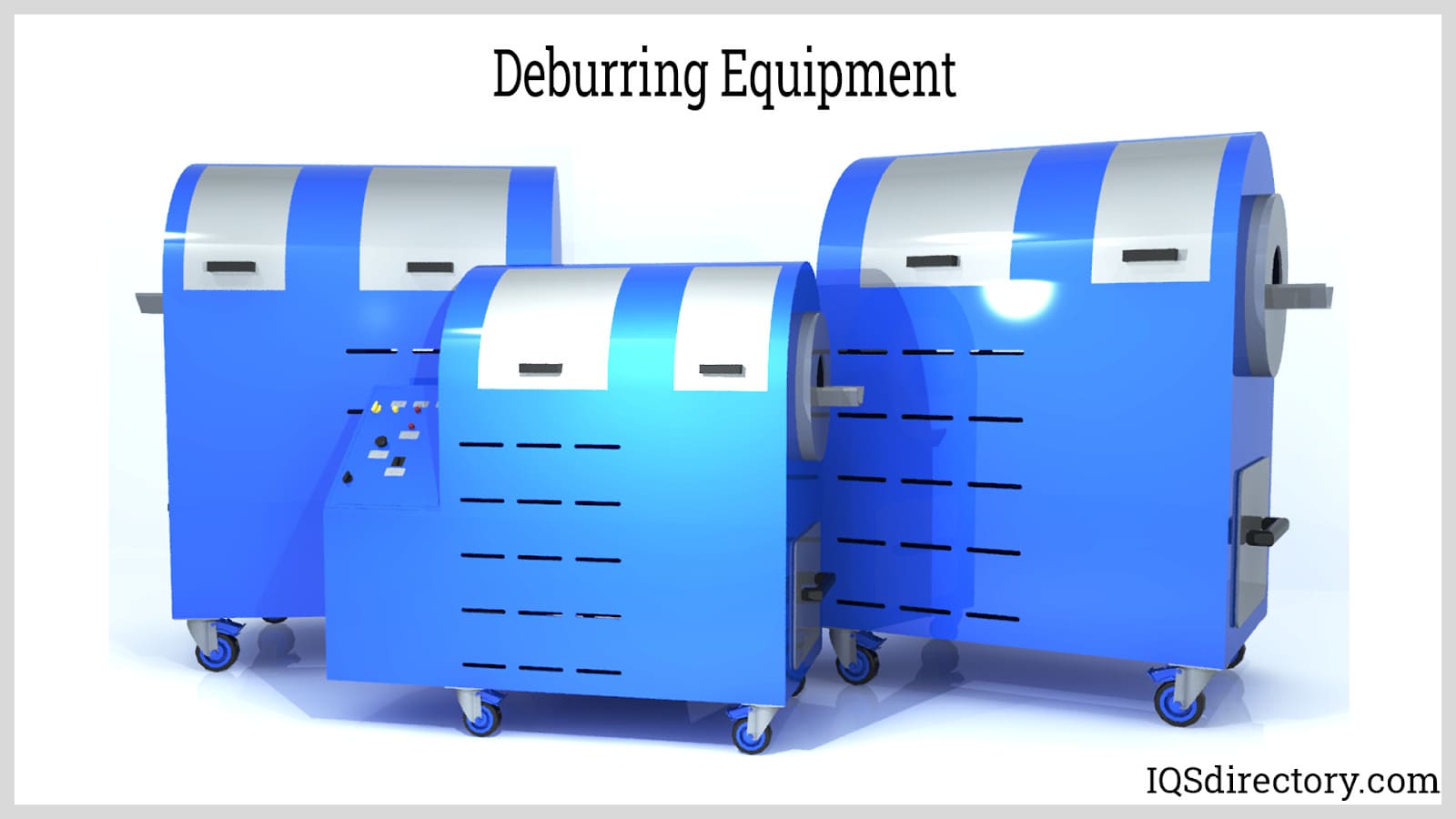 Deburring equipment are used to remove raised edges and unwanted pieces of material from a product.
Deburring equipment are used to remove raised edges and unwanted pieces of material from a product.
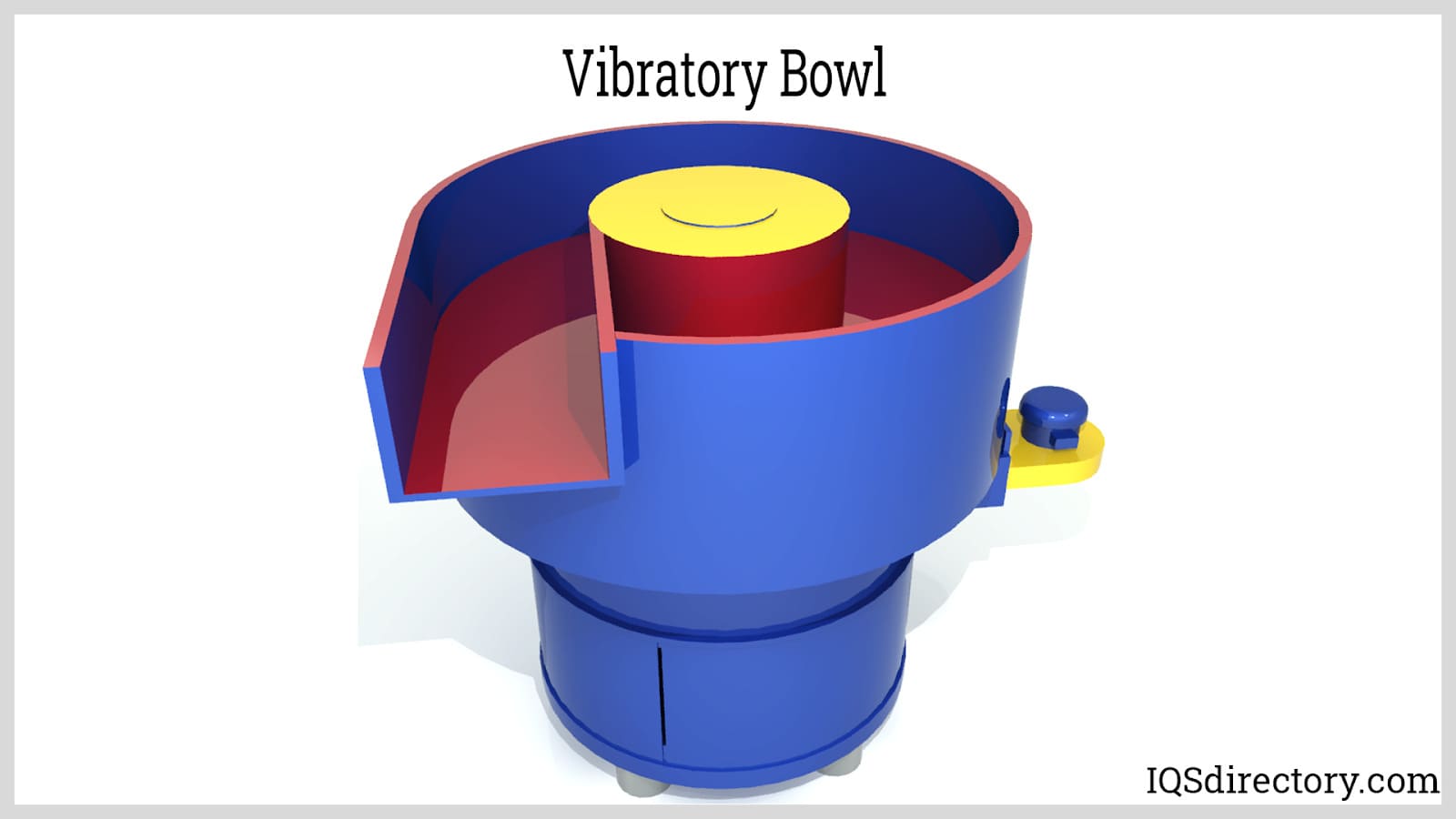 The parts inside a tub filled with specially shaped pellets of media then applying vibration force to all the tub’s contents which will remove any burrs.
The parts inside a tub filled with specially shaped pellets of media then applying vibration force to all the tub’s contents which will remove any burrs.
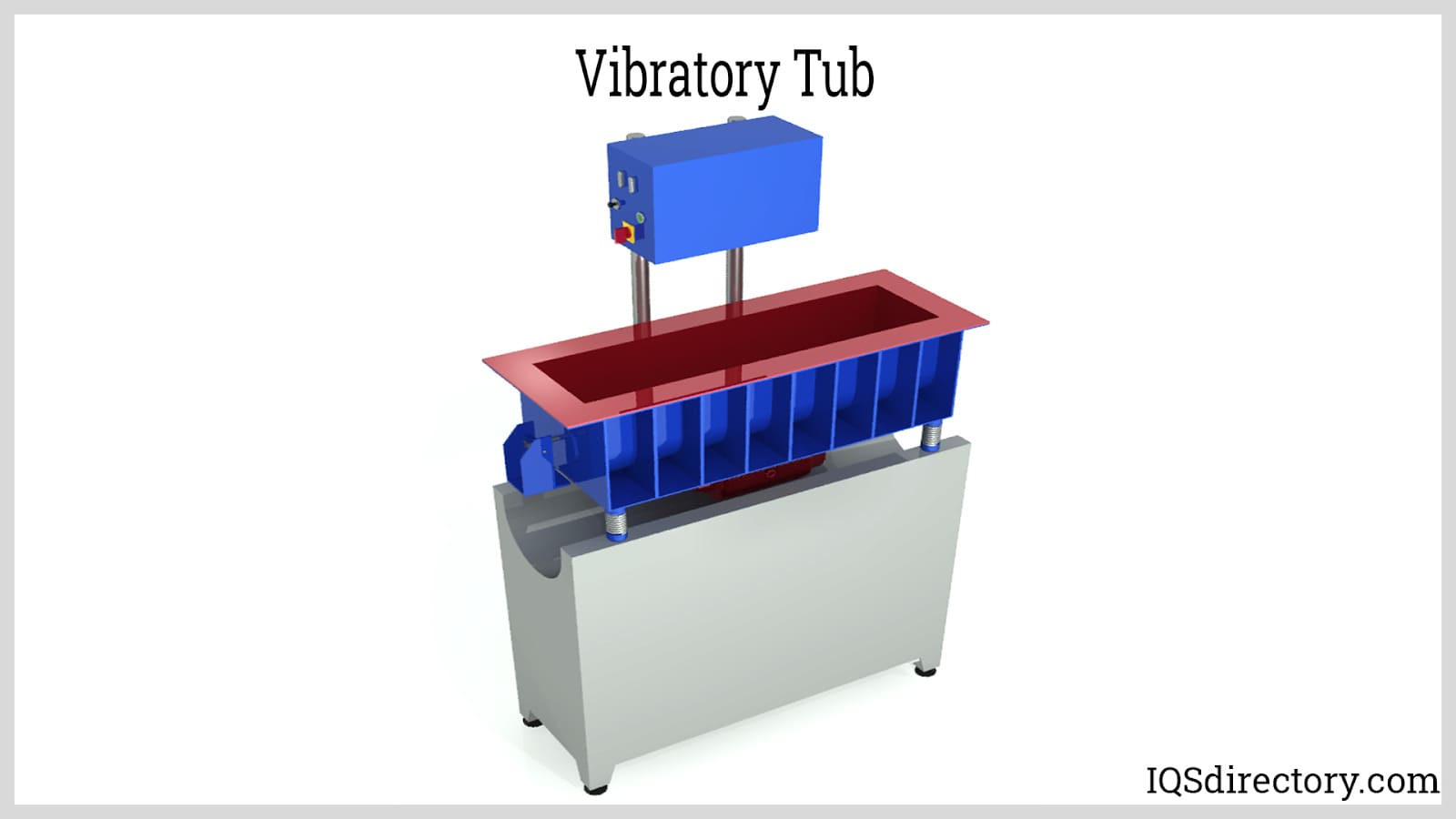 Vibratory deburring machines are tumblers where parts are loaded into a chamber along with the abrasive media and other compounds.
Vibratory deburring machines are tumblers where parts are loaded into a chamber along with the abrasive media and other compounds.
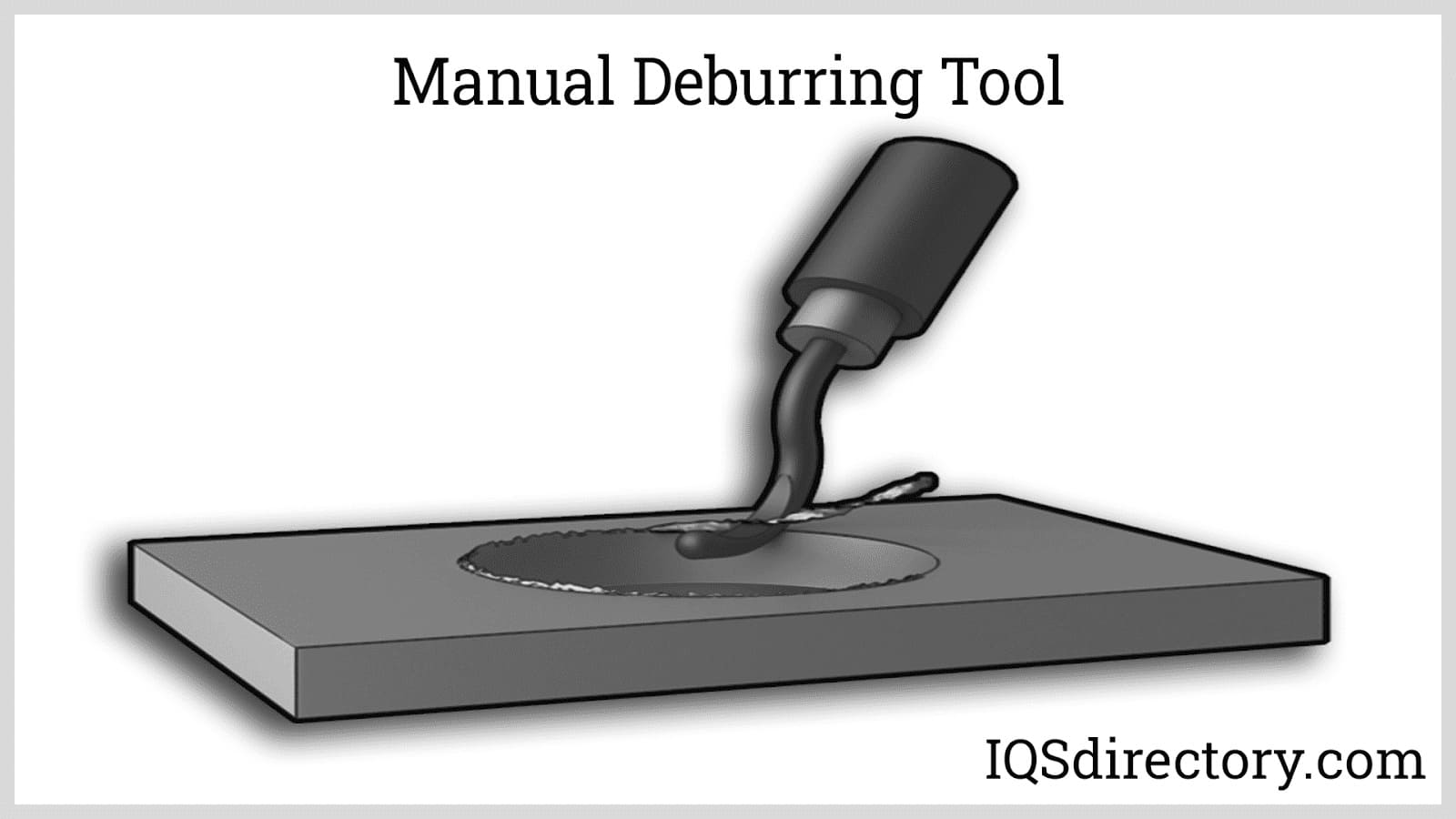 This process uses hand-held tools which is slow and generally done at the end of a production line.
This process uses hand-held tools which is slow and generally done at the end of a production line.
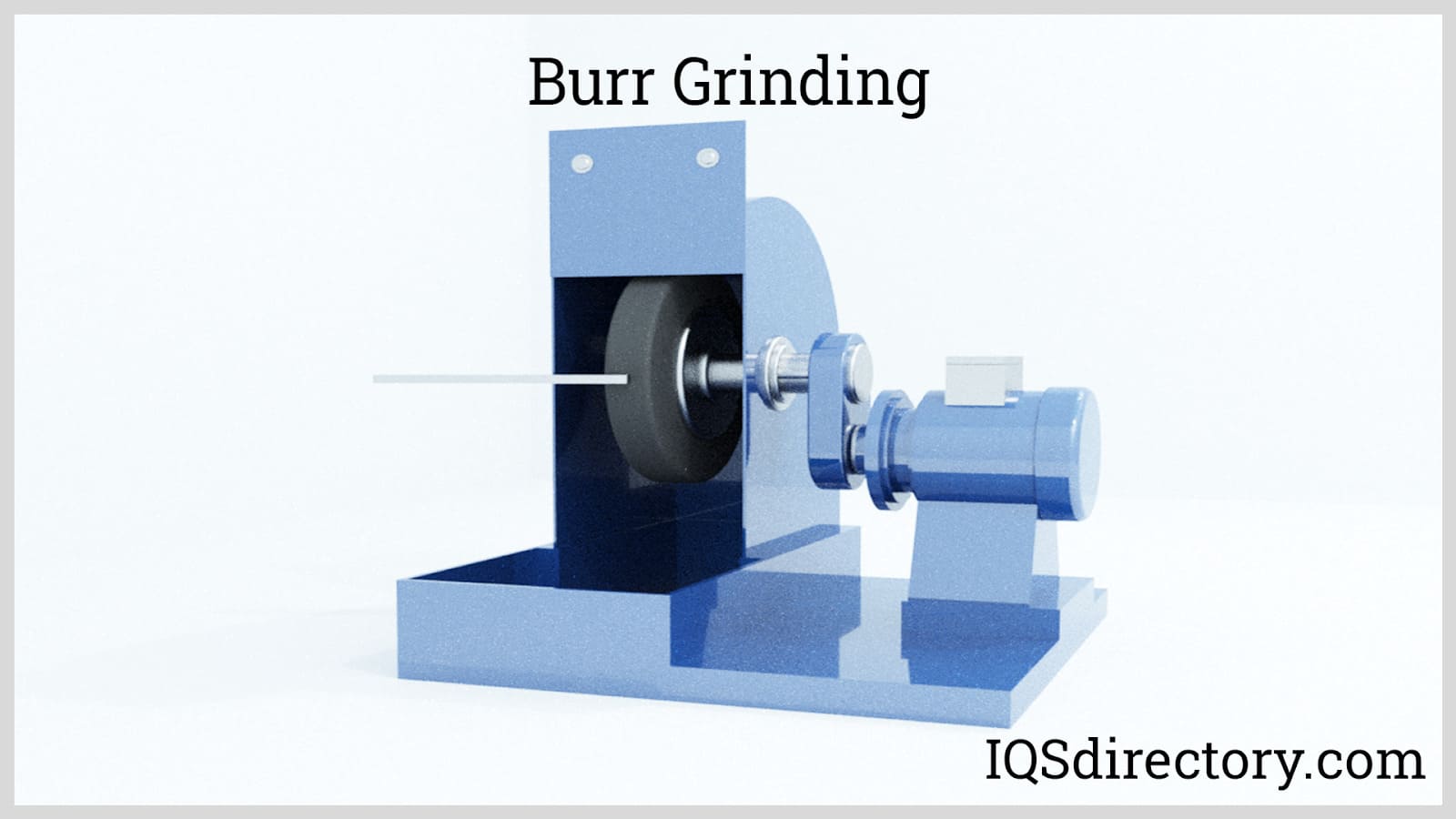 Uses abrasives such as aluminum oxide, silicon carbide, and zirconia compounds bonded into sheets, belts, pads, wheels, and discs. Mechanized reciprocating or rotating action of the abrasives removes materials that is raised from the surface.
Uses abrasives such as aluminum oxide, silicon carbide, and zirconia compounds bonded into sheets, belts, pads, wheels, and discs. Mechanized reciprocating or rotating action of the abrasives removes materials that is raised from the surface.
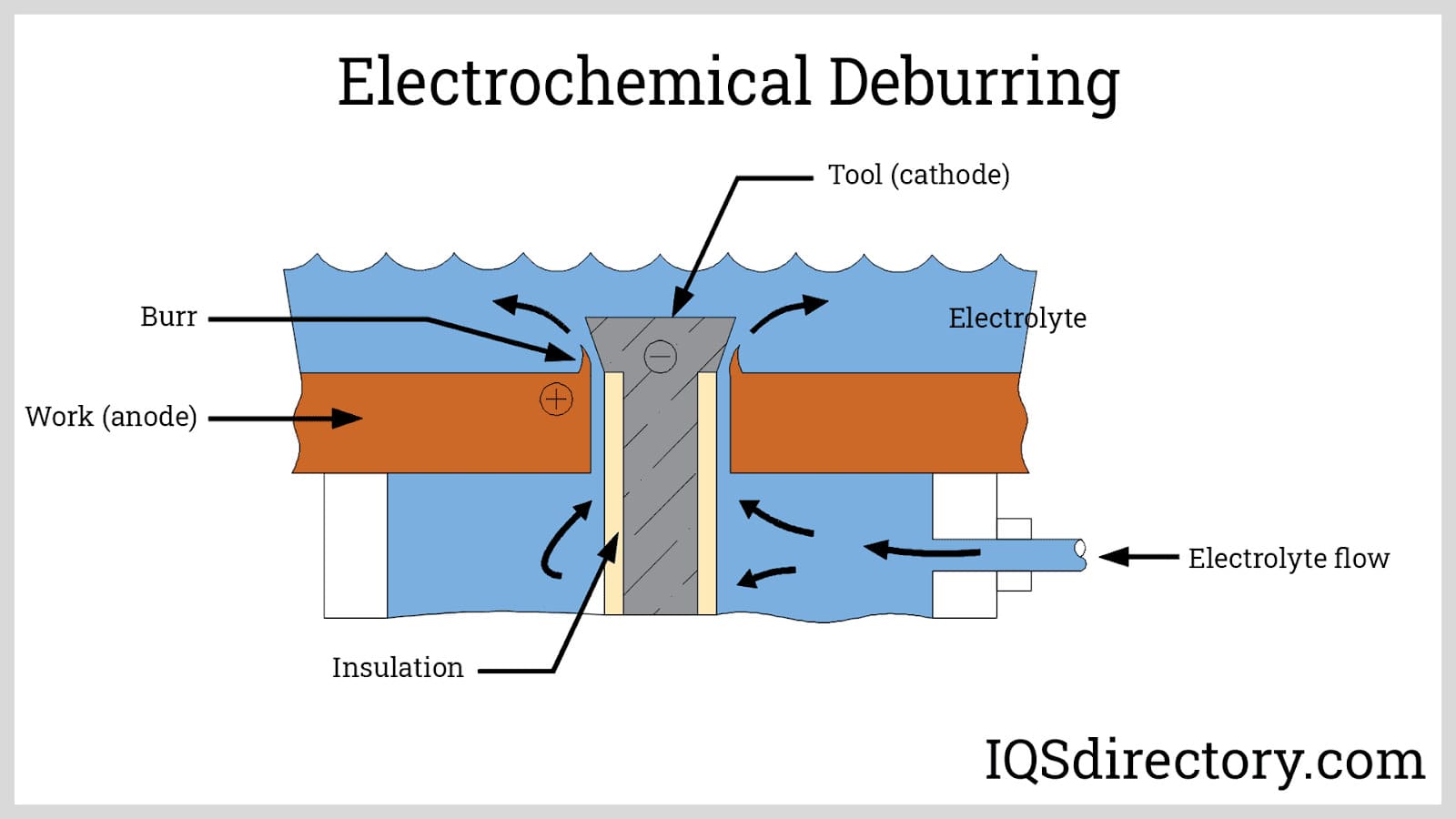 A process that uses electrolysis which is focused on the burrs.
A process that uses electrolysis which is focused on the burrs.
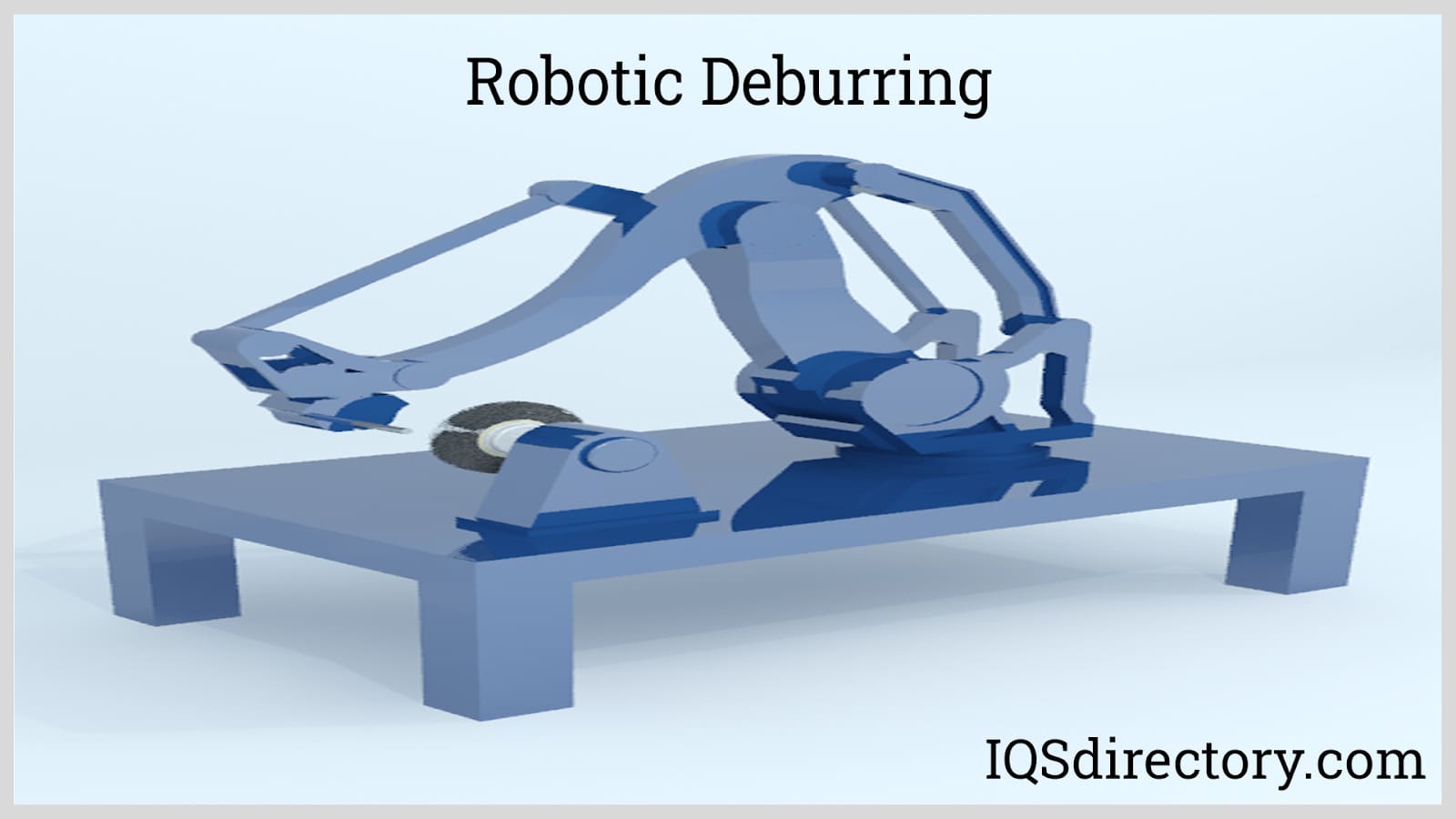 Robotic deburring is beneficial long term because of the reduced operating costs and the robotic systems are more safer than the manual process.
Robotic deburring is beneficial long term because of the reduced operating costs and the robotic systems are more safer than the manual process.
Deburring Equipment Types
There are numerous machines, systems, and tools within the deburring equipment category, each offering its own unique advantages and drawbacks. Some may overlap or work alongside other deburring methods, while others function as complete independent systems.
Barrel Finishing
Also known as tumbling, this process involves tumbling workpieces in a hexagonal or octagonal barrel along with abrasive media, creating a low-pressure abrasion action to remove burrs.
Brush Deburring
This method uses abrasive brushes to rub against items, effectively removing unwanted bumps and edges while adhering to specific tolerances and requirements.
Centrifugal Disc
Similar to barrel machines, centrifugal disc systems use a spinning disc at the bottom of the machine to rotate the parts and abrasive media together, enhancing the deburring process.
Continuous Processing Equipment
This equipment is designed for processing high volumes of parts on a continuous basis in an in-line production setup, ensuring smooth and efficient deburring for large quantities.
tumbling
A type of dry deburring media made from pulverized, treated corn cob rings. The particle size can vary from fine to moderate and is often used in applications requiring a gentler abrasive material.
Deburring Machines
These machines are specifically designed to remove burrs from metal and plastic parts, helping to refine and smooth the finished products.
Deburring Media
Refers to the materials used to remove burrs from parts. These media can vary depending on the material and application.
Finishing Equipment
This category includes machinery designed to alter the surface characteristics of parts or materials, such as polishing, coating, burnishing, and deburring.
Oval Vibratory Systems
These versatile machines can be set up for either continuous or batch processing, making them adaptable for extended time cycles in deburring applications.
Parts Tumbler
Used for finishing, polishing, and deburring plastic and metal parts. Tumble machines offer a consistent and efficient method for processing a variety of materials.
Polishing Equipment
Often involved in deburring processes, polishing equipment can include barrel or vibratory tumblers, as well as non-enclosed tools like Nylon Abrasive Filament (NAF) brushes or standard hand-held sandpapers and files.
Sand Blasting Equipment
A deburring method where parts are blasted with media, such as small ceramic pieces or walnut shells, to achieve a desired finish. This is typically used for softer plastic parts, in contrast to other methods like tumbling.
Tumblers There are two main types of tumblers: rotary tumblers and vibratory tumblers. Both are commonly used in deburring, but their functions and applications may differ.
Tumbling Barrels
A type of deburring equipment used primarily on hard metals like steel and stainless steel, ideal for removing heavy burrs and refining the surface.
Tumbling Media
The abrasive materials used in tumbling processes to remove burrs and smooth surfaces.
Vibratory Finishing
A burr removal process in which parts are accelerated and decelerated by mechanical means inside a drum-like enclosure, helping to smooth edges and refine surfaces.
Vibratory Tumblers
A type of deburring machinery similar to barrel machines, but with an open top to allow operators to observe the deburring process without stopping the machine.
Deburring Applications
Deburring equipment is widely used to finish machine components and various completed products in situations where burrs, rough edges, or protrusions could lead to safety hazards, friction-related inefficiencies, or other potential problems. It is also employed for aesthetic purposes to improve the appearance of the finished products.
Due to its versatility, deburring equipment is used across many industries, but it is particularly essential for companies in the following fields:
- Industrial Manufacturing
- Electronics
- Construction
- Automotive
- Aviation
- Medical
Safety and Compliance Standards for Deburring Equipment
Safety and compliance requirements vary depending on the type of deburring equipment used. For example, equipment that utilizes grindstones or machine tools will have different safety and regulatory requirements compared to systems that use chemical, thermal, or vibrational methods.
It's essential to thoroughly review all relevant safety regulations, compliance standards, and potential hazards for the specific equipment you plan to use. Make sure to communicate these details to your employees. These considerations should be factored into your decision-making process when selecting deburring equipment.
Other Considerations for Deburring Equipment
Maintenance needs will vary depending on the deburring solution you choose. Some systems may require consumables, while others may experience wear and need regular part replacements. More complex systems could have strict maintenance demands, potentially requiring someone with expertise in heavy machinery, while simpler manual equipment may be easily managed by lower-skilled labor.
It's also important to consider upkeep beyond routine maintenance. For example, you may need to replace components due to standard wear and tear on machine parts, a common aspect of all deburring methods. Whether using brushes, belts, chemicals, heat, or other systems, both machine parts and the parts being processed will inevitably degrade over time.
Additionally, when selecting deburring equipment, it’s wise to think about future growth, potential expansion, or efficiency upgrades. Investing in a system that cannot be expanded could become a bottleneck in your production pipeline, while spending more today on a system that meets current needs but allows for future upgrades might be more beneficial in the long run.
Choosing a Deburring Equipment Manufacturer
Choosing the right manufacturer for your deburring equipment can be challenging due to the many factors that influence not only the final product but also your overall experience. To ensure an efficient and cost-effective process, here are some key points to consider:
Experience
While every company needs to start somewhere, it's best not to be the first customer for a new manufacturer. Even if a deburring equipment manufacturer is new, they should have a strong background in manufacturing or staff with the necessary expertise. More crucial than general industry experience is familiarity with your specific requirements. A company that primarily serves customers with one-off deburring solutions may not be the right fit for supplying mass-volume deburring systems for industrial clients.
Support
The product you receive is just one part of your overall experience with a manufacturer. Pay close attention to the quality of support, sales, and customer service you receive. You want clear and reliable communication whether you are a new customer, a repeat customer, or seeking help with a problem. It should be easy to get a response to your inquiries, and the information provided should be actionable. Good support is often a strong indicator of the overall quality of a company’s products and services, as transparency, professionalism, and efficiency in support typically correlate with a high level of manufacturing quality.
Flexibility
If you are only placing a single order, flexibility may not be as crucial. However, if you expect to make additional orders or adjustments down the line, flexibility becomes key. Whether you need to switch to a different solution, adjust order volumes, or require expedited delivery, a manufacturer’s ability to accommodate changes and react quickly will greatly impact your experience.
Suitability
It's important to distinguish between a good manufacturer and the right manufacturer for your needs. A company that excels in general manufacturing may not be the best fit if they rarely work with the type of deburring equipment you need, primarily serve companies with much larger or smaller volume demands than yours, or are unable to meet your specific logistical expectations. Make sure the manufacturer you choose aligns with your unique requirements.
Deburring Equipment Terms
-
Abrasive
Technically, any material that can be used to wear down or shape another material. In industrial terms, abrasives are typically hard minerals from a specific group, used for shaping, finishing, polishing, or deburring materials.
Buffing
A polishing method that utilizes a soft cloth and very fine polishing compounds to create a smooth surface.
Burr
Unwanted protrusions or rough edges on a material resulting from machining processes.
Coated Abrasive
Commonly known as sandpaper, this abrasive is often used on machines like disc sanders and sometimes applied by hand. The abrasive material, typically a synthetic mineral, is coated onto paper or fiber rather than actual sand.
Crystalline
Refers to the texture of mineral groups or masses where distinct crystal faces are visible.
Disc Grinding
A grinding process that uses the face of a large wheel to create flat and parallel surfaces in high-volume production settings.
Edge
The point where two surfaces meet or intersect.
Finish
The measurement of surface characteristics of a workpiece, typically related to smoothness and texture.
Friability
The tendency of abrasive grains to fracture or break apart when struck or placed under pressure.
Emery
A natural abrasive composed of aluminum oxide and small amounts of iron oxide. Historically used in the finishing industry, it is now primarily used in home workshops for hand deburring.
Mass Finishing
A group of processes that use abrasives to remove burrs or apply finishes to small workpieces, often in large quantities.
Media
The abrasive materials, such as pellets, stones, or other substances, used in mass finishing and deburring. Common examples include silicon carbide, plastic, ice, sand, and walnut shells.
Polishing
A finishing process that uses very fine abrasives to remove little to no material, focusing primarily on improving surface appearance. It often follows deburring to achieve the desired finish.
Silicon Carbide
A synthetic mineral used extensively in the finishing industry, known for its hardness and effectiveness as an abrasive. It is harder than aluminum oxide and is commonly used in a variety of finishing applications.